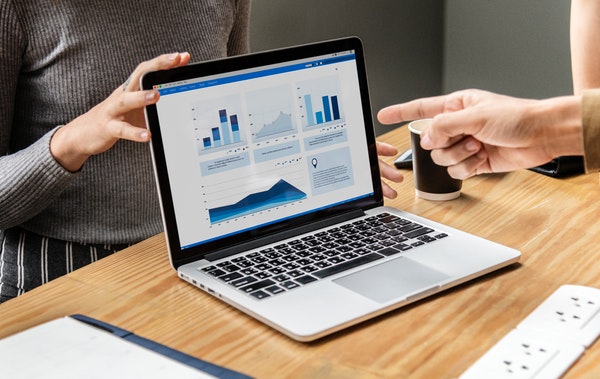Over the past few years, it has been a common theme to see product creators and manufacturers transforming, pivoting, and constantly re-inventing themselves to achieve digital transformation and modernization.
Incorporating Internet of Things (IoT) technology is a prime example of this type of transformation.
One of the biggest drivers behind this evolution is the reduction in the physical size and cost of sensors, devices, and connectivity that now make it easier to create “smart products” and “smart devices”. You may have even seen a smart toaster released in recent years.
Other business forces behind this trend include:
- Dropping data communication costs
- Cheaper (and faster) data storage
- Reduced barriers to entry via cloud platforms
- Recurring revenue models built on things like “data as a service”
How Product Creators and Manufacturers are Capitalizing on IoT Connectivity
One of the key requirements in all these product developments has been that they require an interface to allow access for internal and external users. This access would be required when doing things like provisioning a new device to bring it online, or in exposing analytics and received data to relevant users.

From a consumer’s perspective, buying a smart product only matters if there is something to be gained from its connected nature, and product manufacturers would do well to always keep this in mind. A device or product must be easy to use and connect and should be quick to demonstrate its value.
Many times a product’s value is simply in its ability to deliver superior convenience to the end user.
So how are you leveraging the power and connectivity of IoT technology in your products and business? And how are you ensuring that you deliver value to the end user while gleaning commercial value in return?
To help inspire you, let’s look at some ways that IoT connectivity is benefiting product creators and manufacturers today.
Simplifications Through Remote Management
One of the most basic use cases for the value of IoT connectivity is the ability to manage products and devices remotely. It can be as simple as being able to see a device’s status, interact with it in some way, or push an update to it.
For example, there are huge benefits in being able to remotely manage things like thermostats, security cameras, lights, locks, and more.
Remote management has significant commercial applications as well. Businesses may need to access devices in difficult-to-reach places, or highly distributed networks of sensors that would be difficult and time-consuming to manage individually.
The ability to pull telematics with IoT technology for troubleshooting and performance measurement, as well as pushing automated software updates, will drive the overall efficiency of a commercial product line.
Delivering Value Through Asset and Activity Tracking
Activity tracking has become extremely popular in recent years through the proliferation of fitness trackers and smart watches. For these types of devices, the focus is on tracking steps, heartbeats, and—in some cases—a user’s location. End users use this data to help monitor and improve their physical fitness, while the data collected can be used to further improve the product and deliver valuable data on usage.

Commercially, there are far more implementations of asset and activity tracking that are viable than in the consumer space. Consider the value in being able to track a package or shipment. FedEx, UPS, and USPS are all now offering services that show you not only an estimated delivery date, but also the stages and progress of the transport.
This same concept has a major influence on manufacturing and distribution organizations. Data can be used for inventory management efficiency. For example, based on sales forecasts and historical delivery times, new items can be ordered automatically when needed to ensure adequate stock at all times.
There are even applications that use direct location tracking. It is now typical for a golf clubhouse to be able to see on a map every golf cart’s location, battery level, originating tee time, and expected pace.
Consider the implications of this same model in businesses like IT managed services, HVAC, and electrical, or in organizations like EMS and law enforcement.
Safety is another area where data collected from IoT technology can deliver value. Consider being able to monitor where a vehicle or piece of equipment has gone (restricted or unapproved areas) or accelerometer data to determine whether harsh braking or cornering has occurred. Vehicles can also be equipped with speed sensors, and some can even monitor how loud the music in the vehicle is.
Continuous Improvement Through Performance Measurement
Manufacturing companies have been using IoT performance measurement since before IoT became a popular term. For decades, they have been pulling information from production lines based on speed and quality, seeking to optimize both.
A more modern innovation in performance measurement is now taking manufacturing to new levels via gamification.
This is currently more common for consumer applications, but can also be relevant in B2B. Fitness trackers commonly show your step counts against your peers or similar users. This is designed to motivate behavior and further improve perceived health and fitness.
Similarly, in manufacturing, data can be collected and aggregated in near real-time across multiple plants and locations and shown on dashboards designed to drive motivation and competition within an organization.
This need not apply only to companies that make and ship widgets, but can even be implemented in industries like retail. It’s becoming easier and easier to combine data between points of sale, ERP systems, and other secondary systems across multiple locations to build real-time visibility into performance.
Imagine the benefits of an owner of several franchise locations being able to quickly see the total sales, expenses, transactions, and inventory in near real-time across all locations.
Maximum Productivity Through Predictive Maintenance
A recent trend in business technology is to use IoT connectivity to help prevent unexpected downtime through preventative maintenance. Consider how a car’s computer collects data. There are a multitude of data points that can be collected to monitor the mechanical performance of a vehicle, from acceleration to coolant temperature, engine load, miles per gallon, and more.

These devices typically have access to the car’s computer and the relevant fault and error codes that cause check engine lights to come on. Today, these errors and their meanings can also be fed into Artificial Intelligence (AI) and Machine Learning (ML) models to continuously monitor and predict when maintenance should be performed.
Some vehicles are already self-diagnosing. But imagine your car—or more likely an app connected to your car—letting you know that the transmission fluid needs to be flushed. By knowing exactly what needs to be done, you can rest assured that you are not unnecessarily spending money at the service center.
Now think about how this model of IoT connectivity can be applied more broadly in other applications and products. The opportunities are truly limitless!
Your Opportunity is Knocking
Industries across the globe are being disrupted by unique applications of IoT technology that are leveraging data collection, and AI/ML hardware and software have progressed to such a point that unique solutions are now only limited by our own imaginations.
Innovation always leads to opportunity. What opportunities can IoT connectivity help you realize in your business?


